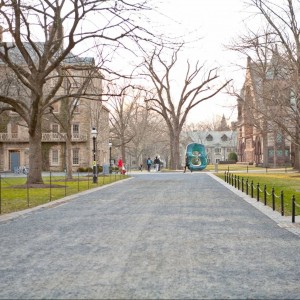Over the course of the semester, PCURs will explain how they found their place in research. We present these to you as a series called The Project That Made Me a Researcher. As any undergraduate knows, the transition from ‘doing a research project’ to thinking of yourself as a researcher is an exciting and highly individualized phenomenon. Here, Vidushi shares her story.
~~~~~~
“Walk around the classroom,” he said, without glancing up from the class roster, “and select a photo. Choose carefully.”
A slight murmur arose in my high school US history classroom as we slung our backpacks in a corner and surveyed the U-shaped desks papered with old ink photographs. My teacher, a stout volunteer firefighter with a white-flecked beard, gave away only a slight smile. As he called time, I hastily grabbed a picture of a judgmental-looking man in tortoise-shell glasses.
“The picture in your hands will be the subject of your semester-end term paper,” my teacher announced. “Choices are final.”
Thus began the first project that made me feel like a researcher, and one of the most valuable intellectual experiences I had in high school.

Self-driven assignments, with outlines loose or nonexistent, had always sparked my inspiration. History term papers—fifteen pages of complete freedom—exemplified this, and I’d been anticipating mine all year. When teachers refused to help identify our photos, I quickly turned to my library’s help service to find one that fit. Allen Ginsberg, Beat poet, 1926-1997.
Researching the Beat movement, I was thrilled to realize that independent readings I’d done on Buddhism and Existentialism connected seamlessly to Beat ideas. The Beats combined elements of both philosophies emphasizing self-awareness without restricting themselves to fit either. Though not the first to create these links, I saw them without a textbook or historian’s guidance. I felt like I was writing something new.
Three months earlier, watching Philip Glass’ Satyagraha at the Metropolitan Opera, I’d had the same sudden feeling. I’d recently discovered that Existentialism linked many books I’d read over the past year—The Metamorphosis, The Stranger, The Rhinoceros, Waiting for Godot, Catch-22 and The Myth of Sisyphus. From the Playbill in my hands, I realized that Glass worked with Existentialist themes and had collaborated with Ginsberg on “Wichita Vortex Sutra,” a piano piece I’d been learning. After Satyagraha, it found its way to my piano. My history paper connected even my favorite composer with Buddhism, Existentialism, and the Beats.
After three months of reading, a paper born from the picture of one Beat poet unified multiple strains in my life using history as its glue. Sartre’s views on suicide tied with the Beat mentality. Books on postwar modernism came alive in NYC museums, and dizzily descriptive Beat poetry resonated within me. By experiencing them firsthand, I appreciated the benefits of interdisciplinary learning. “History” became a combination of philosophy, sociology, English, economics, and art.
A simple research paper changed my perspective on independent learning and the web among the arts. It prompted me to continue to look for links between disciplines, a skill that has motivated me in every piece of research I’ve submitted so far at Princeton. Interdisciplinary learning gives me purpose by proving that, regardless of what subject I major in or what classwork I have, my education has coherence and unity. I am chasing the same questions that have captivated humans for thousands of years. Whether doing analysis in a lab about the brain or reading in my philosophy classes, we are really asking: what is our purpose? What makes us tick? How can we be happy, and how can we leave our mark on the world?
The joy of free exploration is something I’ll chase lifelong (hello, junior papers & senior thesis) —stay tuned!
–Vidushi Sharma, Humanities Correspondent

